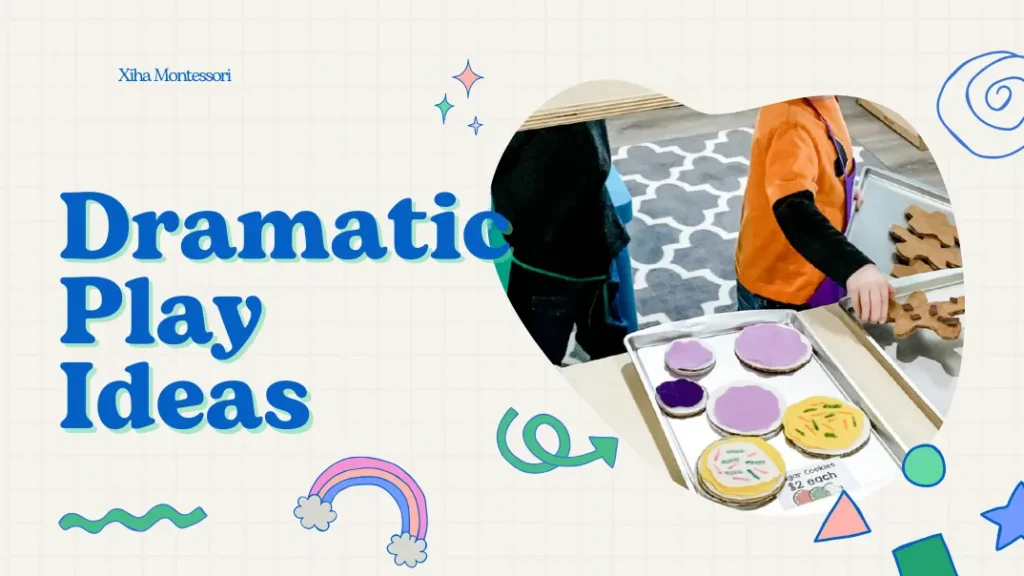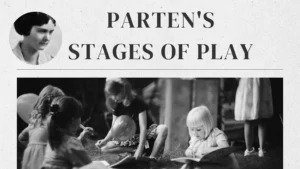As parents and educators, we want to nurture young children’s creativity, social skills, and problem-solving abilities. Dramatic play ideas are a fantastic way to do just that. But do you know what children truly learn when playing pretend play? And how can you create the ideal environment to support such activities? In this article, we’ll explore all that and more.
Dramatic play is essential to early childhood development, allowing toddlers and preschoolers to engage in creative, imaginative, and social play. Young children build critical thinking skills, emotional intelligence, and language development through role-playing and pretend scenarios.
In this blog post, we’ll explore 24 exciting, dramatic play ideas that will inspire your little one and support their growth.
What Do Children Learn When They Act Out Dramatic Play?
Dramatic play is much more than just fun—it plays a crucial role in a child’s development. Acting out scenarios helps children practice life skills, develop empathy, and explore their imagination. It’s a unique form of play that benefits a child’s growth.
1. Attention Span
One of the most immediate benefits of dramatic play ideas is that they help improve a child’s attention span. Unlike other activities that may hold a child’s attention briefly, dramatic play for preschoolers often requires sustained focus. A child must stay involved in a pretend scenario, remember roles, and interact with peers. This helps lengthen their attention span as they move through different stages of play.
2. Self-Regulation
Children learn to control their emotions and actions through dramatic play area ideas for preschoolers. For example, in a pretend doctor’s office scenario, a child must practice waiting for their turn, showing empathy toward the “patient,” and following a sequence of actions. This form of self-regulation is critical in helping children manage frustration, anxiety, and other emotions in real-life situations.
3. Language Development
Dramatic play is an excellent language builder. Children expand their vocabulary by taking on different roles and acting out various scenarios. They may use new words related to professions (like “chef,” “doctor,” or “teacher”) or engage in dialogues that mirror real-life conversations. It’s a natural way to develop their speaking and listening skills.
4. Problem-Solving
When children engage in dramatic play, they often face problems to solve. Whether they’re figuring out how to “fix” a broken toy, making a meal for their pretend customers, or resolving a disagreement between characters, dramatic play ideas help improve critical thinking and problem-solving skills. They must make decisions, troubleshoot, and navigate challenges in a fun, low-stakes environment.

5. Social Skills
Playing with others is central to dramatic play. Children take on different roles and practice key social skills like sharing, negotiating, and cooperating. They must communicate their needs, express emotions, and collaborate to create a shared story or scenario. This helps build their ability to work with others and adapt to social cues.
6. Fine Motor Skills
Whether they’re stacking blocks to build a pretend house, using playdough to create food, or pretending to cook in a kitchen setup, dramatic play ideas for toddlers help children develop their fine motor skills. These activities require children to manipulate objects, strengthening hand-eye coordination and agility—skills crucial for writing, drawing, and self-care tasks.
7. Imagination
Dramatic play ideas for toddlers are a breeding ground for imagination. Whether pretending to be astronauts or exploring the depths of the jungle, children’s imaginations run wild as they create and act out elaborate stories. This kind of play helps children think outside the box, essential for creativity and innovation later in life.
8. Cooperation
Through dramatic play, children also learn the value of teamwork. In group settings, they collaborate on creating stories, solving problems, and sharing toys and space. This helps children learn how to work with others, negotiate different ideas, and understand the importance of shared goals.
Types of Dramatic Play
Dramatic play ideas can take many forms. From simple role-playing to complex scenario-based activities, the possibilities are endless. Here are some common types of dramatic play:
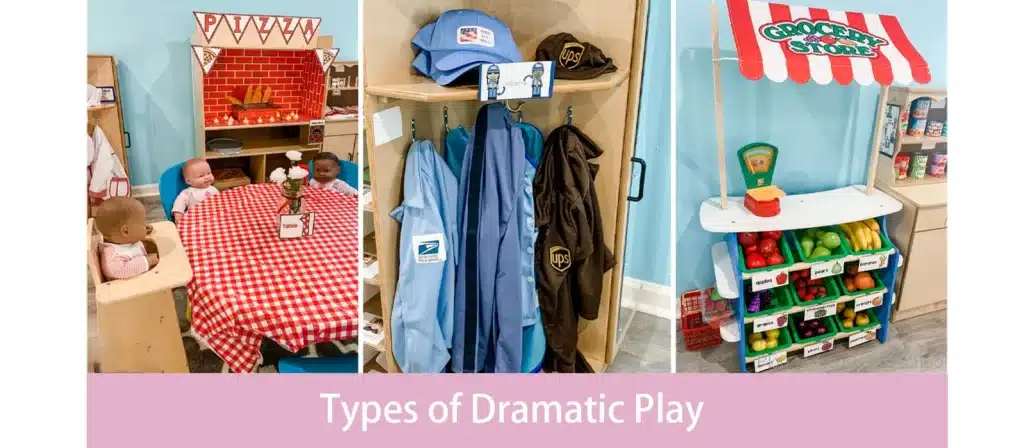
- Role Play: This is the most basic form of dramatic play where children pretend to be specific characters or people. For instance, they might pretend to be a teacher, firefighter, or parent. Role-playing helps children understand the world around them and enhances their social skills. Some great preschool dramatic play ideas for role play include setting up a dramatic play kitchen or a fire station dramatic play center.
- Fantasy Play: In this dramatic play, children immerse themselves in imaginative scenarios, such as pretending to fly to the moon, act as superheroes, or transform into animals. This helps them explore their imagination and develop creative problem-solving skills. You can even create winter or summer dramatic play ideas by tailoring the fantasy theme to the season.
- Object Play: This dramatic play uses everyday objects to represent something else. For example, a spoon might be a pretend phone or a chair could become a car. Ideas for dramatic play areas like this encourage children to make connections between objects and ideas, fostering creativity and symbolic thinking.
- Constructive Play: Although not strictly “dramatic” in the traditional sense, constructive play often overlaps with dramatic play when children build structures to support their pretend scenarios. For example, they may construct a house for their dolls or build a fort for their superhero adventures. Dramatic play center ideas for preschool often include building materials such as blocks or toy furniture to enhance the play’s realism.
Furniture for Dramatic Play Areas
Creating a dedicated space for dramatic play is essential for fostering the right environment. The furniture in these spaces should be functional and supportive of a child’s imagination. Below are some essential furniture types you can incorporate into dramatic play areas for preschoolers:
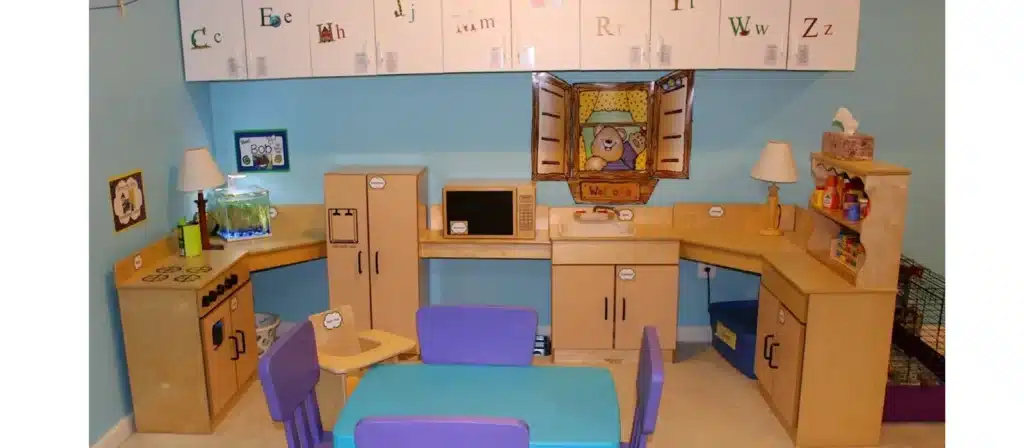
- Miniature Tables and Chairs: These are perfect for restaurants, classrooms, or offices. Having small-scale furniture ensures that children can comfortably sit and interact with one another in a way that mimics real-world activities. You can set up dramatic play area ideas such as a “classroom dramatic play” where children can play the role of teachers and students.
- Shelves and Storage Units: These are essential for organizing dramatic play materials. Use them to store costumes, props, and small toys. Easy access to these items encourages independent play and organization skills. Consider having separate storage for easy dramatic play ideas like creating a post office dramatic play station or a dramatic play flower shop.
- Pretend Kitchens and Cooking Stations: A toy kitchen or cooking station is necessary in any dramatic play area. These stations can include miniature appliances like stoves, refrigerators, and sinks, providing children with the tools to simulate cooking and food preparation. Dramatic play kitchen ideas are some of the most popular, especially for kindergarten dramatic play ideas where kids often enjoy setting up their restaurant.
- Costume Racks: Having a designated area for dress-up clothes allows children to explore different characters. Whether it’s a pirate costume, a doctor’s lab coat, or a superhero cape, costumes help bring their dramatic play to life. This is great for dramatic play, pretend play ideas like a fire station, dramatic play ideas, or even Christmas dramatic play ideas for preschoolers where kids can dress up as Santa Claus, elves, or reindeer.
- Playhouses or Tents: These structures create a space for children to act out stories. A playhouse could serve as a home, a store, or a spaceship. Dramatic play center ideas for preschool often include setting up tents or small houses that help children immerse themselves in their pretend world.
- Toy Cars and Play Mats: For scenarios like construction sites, hospitals, or transportation hubs, toy cars and themed play mats can help create immersive settings where children can drive, build, or “travel.” Outdoor dramatic play ideas are also great with these materials, such as a pretend highway or a fire station dramatic play outside in the garden.
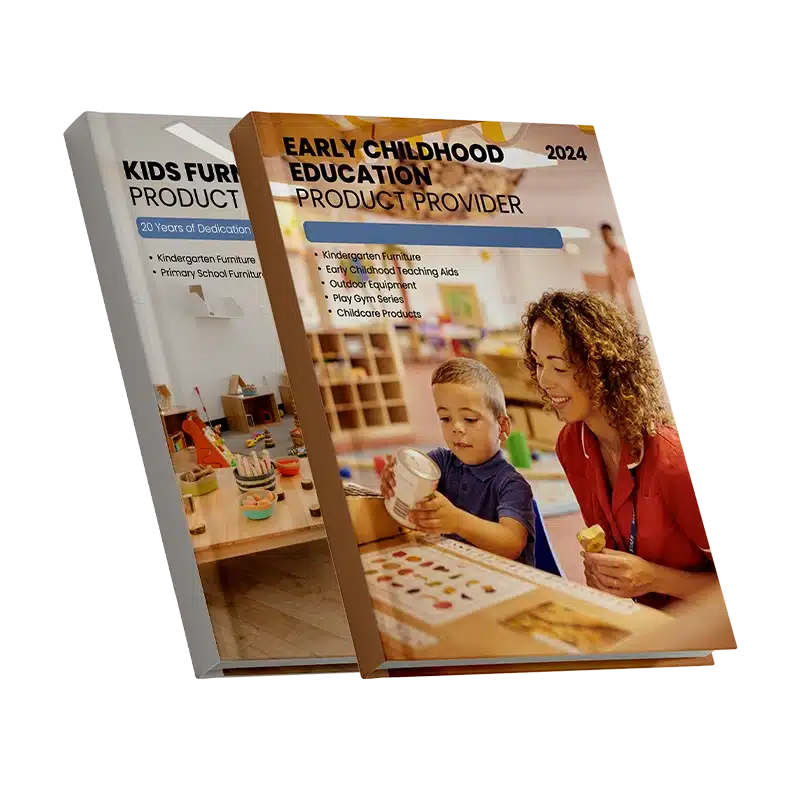
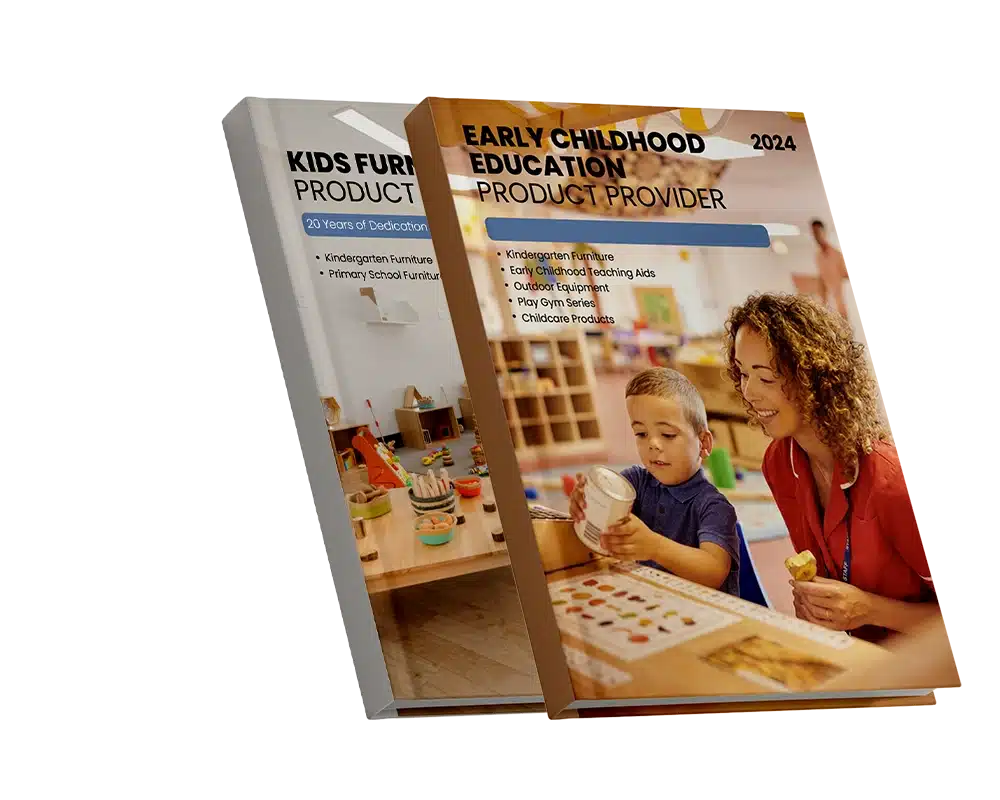
How to Prepare for a Play with Your Toddler
Preparing for dramatic play with toddlers requires a mix of planning and flexibility. The key is ensuring the environment is safe, comfortable, and stimulating.

- Choose the Right Theme: Depending on your child’s interests, pick a theme they will find engaging. If they love animals, set up a zoo. If they’re fascinated by space, set up an astronaut station.
- Incorporate Props: Props make the play more realistic. If you’re setting up a dramatic play kitchen, include pretend food, utensils, and cooking tools. Props allow children to act out scenarios with greater detail and creativity.
- Encourage Imagination: While props and costumes are important, children’s imaginations are the driving force. Please encourage your child to invent their stories and avoid directing the play too much.
- Provide Opportunities for Free Play: While guiding your child is tempting, allow them plenty of space to explore and create their own stories. Dramatic play thrives when children are free to invent their worlds.
- Encourage Social Interaction: If possible, involve other children. Dramatic play often works best in group settings where children can collaborate, share roles, and engage in dialogue.
24 Dramatic Play Ideas
Dramatic play is a powerful tool for helping toddlers and preschoolers develop various skills. From creativity and problem-solving to social interaction and communication, these dramatic play ideas provide endless opportunities for learning through imagination. Below, we’ve curated 24 exciting and engaging dramatic play center ideas to keep children entertained and help develop critical life skills.
1. Pretend Play Kitchen
Set up a pretend kitchen where children can take on various roles, such as chefs, waiters, or customers. This encourages children to imitate real-life actions, from cooking to serving food and builds essential social skills. The activity promotes cooperation as children work together to prepare and serve food.
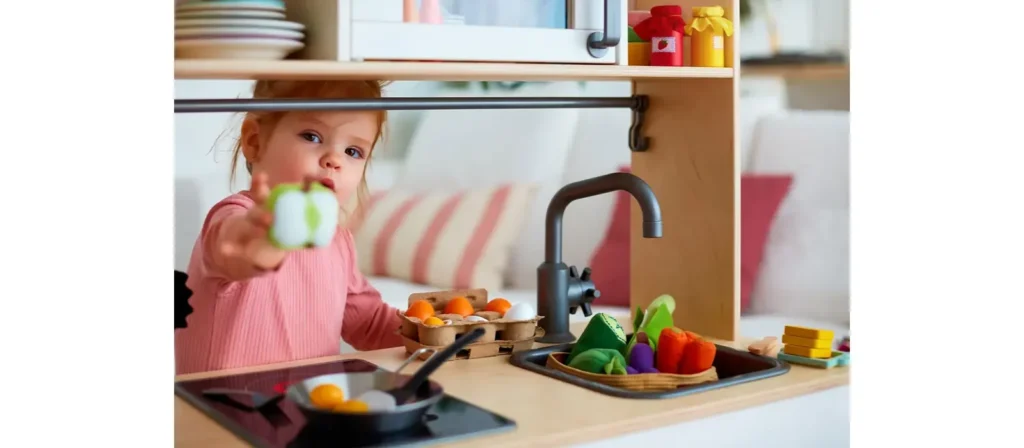
- Materials Needed: Toy kitchen appliances (oven, microwave, stove), plastic food items (vegetables, fruits, plates, cups), utensils, aprons, and play menus.
- Setup: Arrange the play kitchen in the corner of the room, with a small dining table or counters where children can “serve” food to each other. Add a “waiter” station, a cashier station with play money, or pretend food packaging.
This idea improves fine motor skills (cutting, stirring, organizing), enhances language development, and boosts social interaction.
2. Fire Station Rescue
Children can act as firefighters, rescuing people, animals, and objects from dangerous situations. This type of dramatic play helps children understand the importance of safety and cooperation. They can take turns being firefighters, emergency responders, or ones needing rescue.

- Materials Needed: Toy fire trucks, hats, hoses, safety cones, fire extinguisher props, firefighter costumes, and walkie-talkies.
- Setup: Create a “fire station” using red-colored blankets and set up a “fire” using red construction paper or soft toys. Organize the space to simulate a fire rescue scene, complete with a safe zone for the “victims” and obstacles for the firefighters to navigate.
This dramatic play promotes teamwork and problem-solving and teaches empathy as children help each other.
3. Flower Shop
Children can run their flower shop, learning about colors, shapes, and business basics. In this role play, kids act as florists who create bouquets and serve customers. This promotes creativity, communication skills, and basic math (pricing, making change).
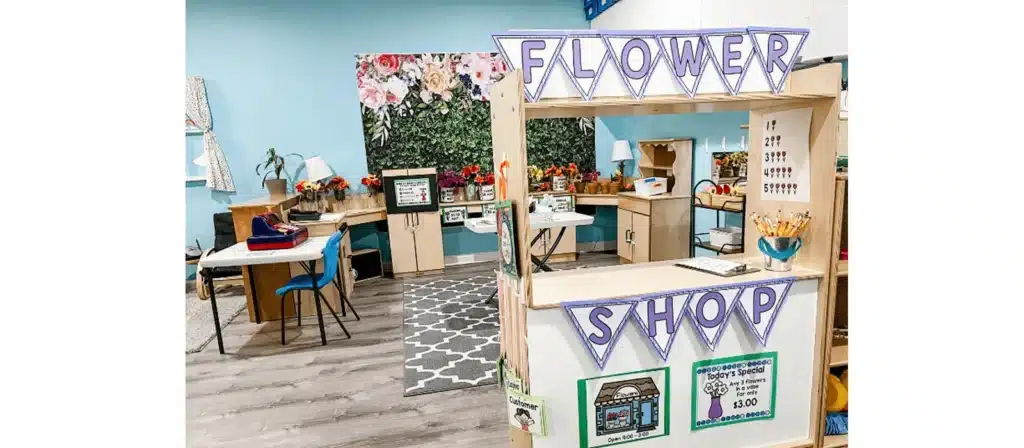
- Materials Needed: Artificial flowers, flower pots, ribbons, play money, toy cash register, and pricing signs.
- Setup: Set up the flower shop with shelves displaying artificial flowers, ribbons, and vases. A small table can act as the checkout counter, and you can create “customer” stations where children can choose flowers to purchase.
4. Superhero Academy
This dramatic play allows children to become superheroes, developing their superhero identities. They can work together to stop imaginary villains, complete missions, and save the day. The activity boosts teamwork and fosters creativity and problem-solving.

- Materials Needed: Superhero costumes (capes, masks), toy shields, wands, and obstacle course equipment.
- Setup: Create a superhero training ground with obstacles, cones, and equipment to test their agility and “superpowers.” Assign roles such as the hero, sidekick, or villain.
5. Post Office Station
Pretend to run a post office where children can sort and deliver mail. This dramatic play activity helps children learn about communication, organization, and sending and receiving mail.

- Materials Needed: Toy envelopes, stamps, markers, toy packages, a mailbox, toy cash register, and play money.
- Setup: Set up a “post office” corner with shelves for sorting mail, a mailbox for sending letters, and a small counter for interacting with customers. Children can take turns being postmen or customers, delivering letters, or sending packages.
6. Grocery Store Shopping
Turn your play area into a grocery store where children can practice shopping for food, handling money, and learning about nutrition. They can take turns being customers, cashiers, or store employees, reinforcing concepts like sharing, teamwork, and responsibility.
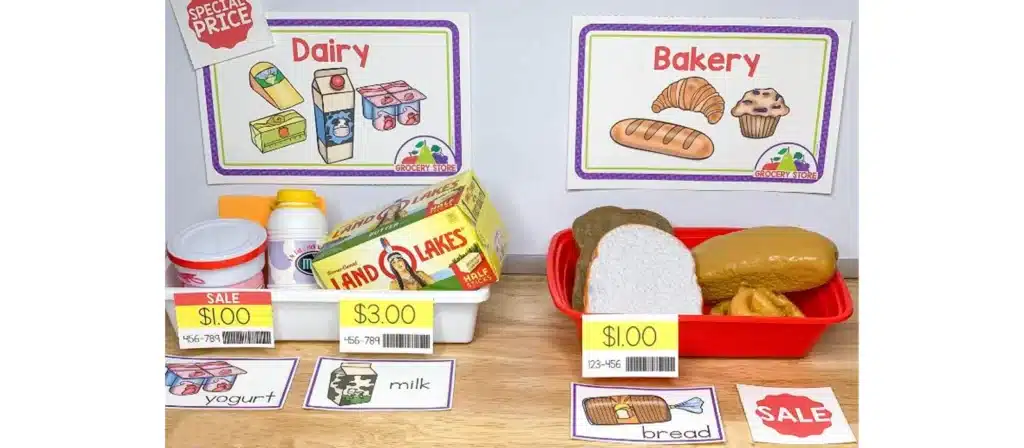
- Materials Needed: Toy shopping carts, plastic food items (fruits, vegetables, cereals), price tags, toy cash register, play money, and grocery store signs.
- Setup: Arrange the grocery store section by displaying food items on shelves or in baskets. Have a checkout counter with a toy register where children can pay for their items. Set up a customer service area to help each other.
7. Doctor’s Office
In this activity, children take on roles as doctors, nurses, and patients, learning about health and well-being. This type of dramatic play helps children understand empathy, responsibility, and the importance of caring for others when unwell.

- Materials Needed: Toy stethoscopes, bandages, toy medical kits, patient charts, doctor’s coats, and stuffed animals for patients.
- Setup: Create a “doctor’s office” with a toy examination table, shelves for medical instruments, and a waiting area for patients. Children can role-play diagnosing and treating the patients or play a supportive role as the nurse.
8. Construction Site
Transform your space into a construction zone where children can pretend to be construction workers. This activity allows kids to practice teamwork as they “build” structures and solve problems together. It also enhances their fine motor skills and imagination.
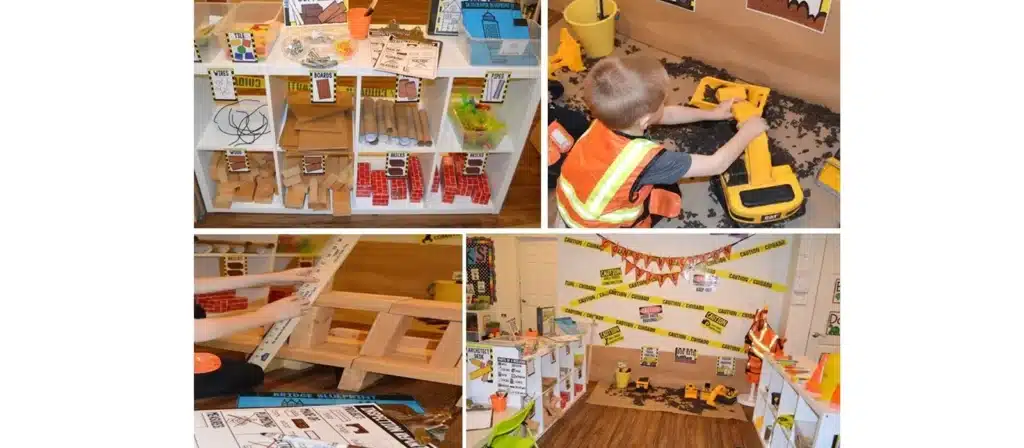
- Materials Needed: Toy construction tools (hammer, drill, saw), blocks, hard hats, safety vests, and construction signs.
- Setup: Set up a building zone with wooden blocks, large cardboard boxes, or soft bricks. Children can work together to build structures, pretend to fix things or construct imaginary buildings.
9. Restaurant Café
Create a restaurant or café setting where children can pretend to be chefs, waiters, or customers. This setup allows them to explore the food industry while practicing basic math (prices, counting) and social skills (communication and role-taking).
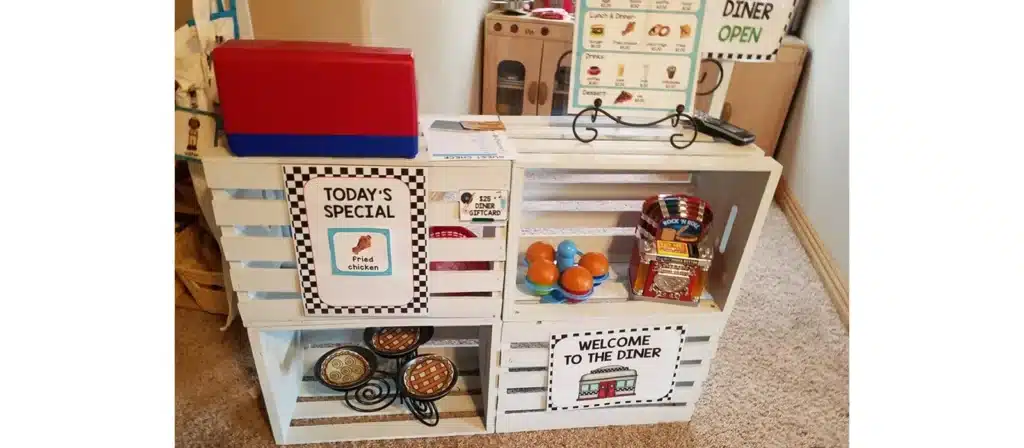
- Materials Needed: Toy kitchen items, pretend food, toy menus, play money, and a cash register.
- Setup: Set up tables and chairs as restaurant seating, and create a kitchen area where children can pretend to cook food. Have menus with price lists for customers to order from and a counter where children can pay for their meals.
10. Pirate Adventure
Children embark on an exciting pirate adventure, looking for treasure and solving problems. This activity nurtures imagination, physical activity, and problem-solving skills as children search for hidden treasures and navigate “pirate waters.”
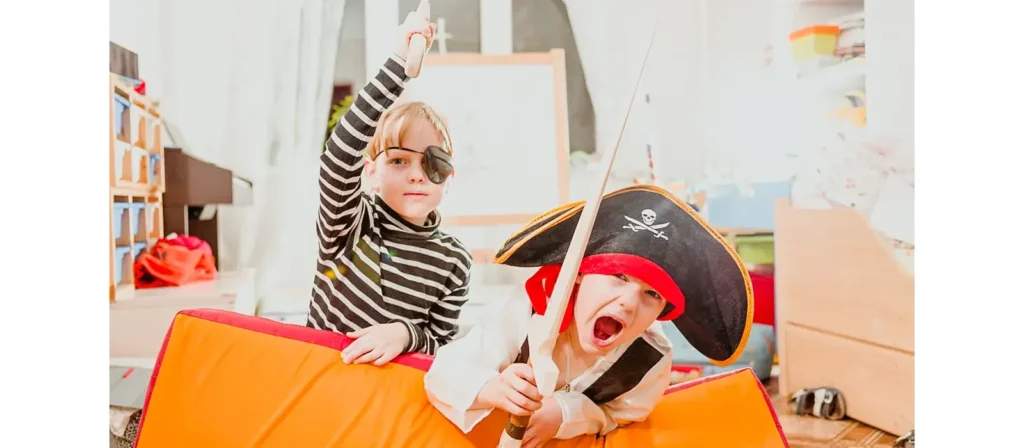
- Materials Needed: Pirate hats, toy swords, treasure maps, a treasure chest, and pirate ship props.
- Setup: Use blankets and pillows to build a pirate ship or set up an “island” where children can explore and find hidden treasures. Incorporate clues and puzzles to help them solve the mystery.
11. Construction Worker Role Play
Let children explore the world of construction as they play the roles of builders, architects, and engineers. Through this activity, they can practice building and designing structures, collaborating on projects, and solving challenges as a team.

- Materials Needed: Toy construction tools, measuring tapes, helmets, blueprints (made from paper), large cardboard boxes or foam blocks, and safety cones.
- Setup: Set up a construction site with construction cones, a blueprint station, and building materials. Children can use the materials to create different buildings, using their imagination to form structures or layouts.
12. Vets and Pet Care
Let children act as veterinarians or pet owners, taking care of sick animals, performing check-ups, and administering pretend treatments. It’s a great way to teach empathy, responsibility, and animal care.
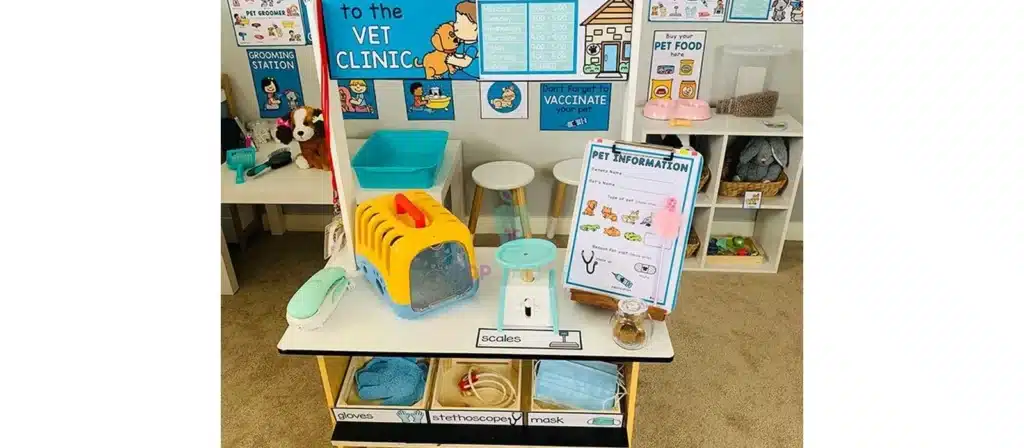
- Materials Needed: Stuffed animals or plastic pet toys, bandages, toy medical kits, pet grooming items, stethoscopes, and vet uniforms.
- Setup: Create a “vet clinic” with examination tables (using small tables or blankets), a waiting area for “pets,” and shelves with medical supplies. Children can take turns being the vet or the pet owner.
13. Bakery Shop
It is a fun way for children to learn about baking and the bakery business. As bakers and customers, they can make pretend treats, serve customers, and learn about customer service and pricing.
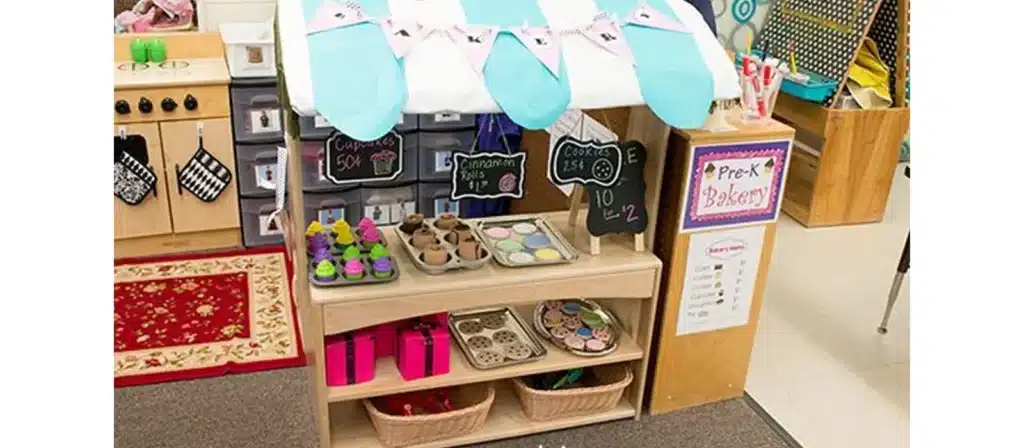
- Materials Needed: Pretend cakes, cookies, cupcakes, plastic bowls, mixing utensils, aprons, bakery signs, toy cash register, and play money.
- Setup: Create a bakery with shelves filled with baked goods (pretend or actual items), a display counter, and a station for making “baked” goods. Children can take orders and serve each other as bakers and customers.
14. Camping Adventure
Create an indoor or outdoor camping experience where children can pretend to set up tents, cook over a pretend campfire, and explore nature. This role-play fosters teamwork, survival skills, and a love for the outdoors.
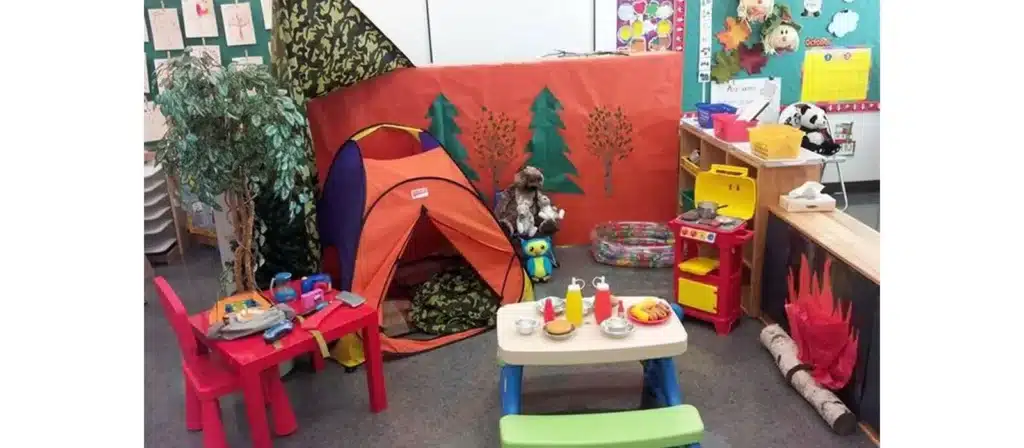
- Materials Needed: Toy tents, sleeping bags, plastic nature items (leaves, sticks), flashlights, camping utensils, and a toy campfire (or red/orange fabric for a pretend flame).
- Setup: Set up a camping area with tents and sleeping bags. Create a small fire pit area using fake logs or fabric, and hang up some nature-themed decorations around the area.
15. Space Exploration
Take children on a journey to outer space, where they can pretend to be astronauts, space explorers, or even aliens. They can work together to solve space-related challenges or discover new planets. Stimulates imagination and problem-solving and helps improve language skills as children discuss and describe the “planets” they explore.
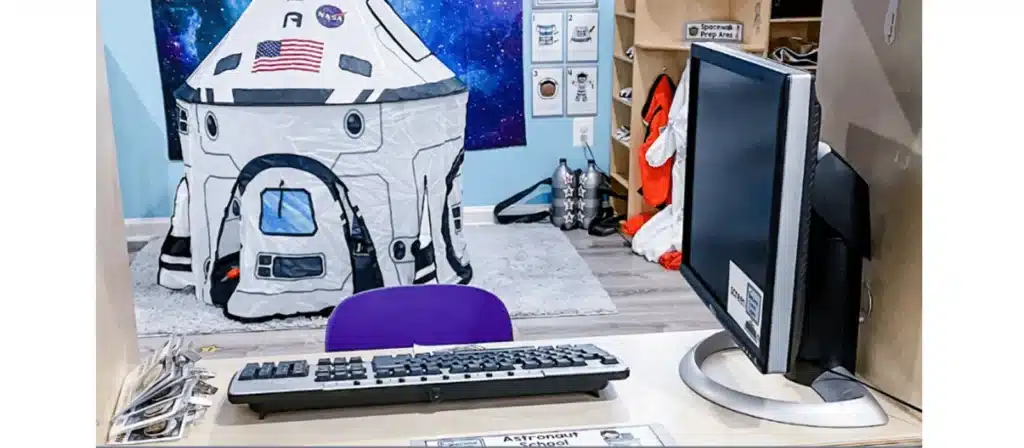
- Materials Needed: Space costumes (helmets, boots), cardboard boxes (spaceships), stars, planets, and moon rock props (cotton balls or painted rocks).
- Setup: Create a “spaceship” using cardboard boxes and decorate with stars and planets. The children can take turns as astronauts or aliens, navigating through “space” and discovering new planets.
16. Police Station
Let children experience the roles of police officers, solving crimes, and maintaining law and order in their pretend world. This promotes a sense of justice and understanding of community safety.
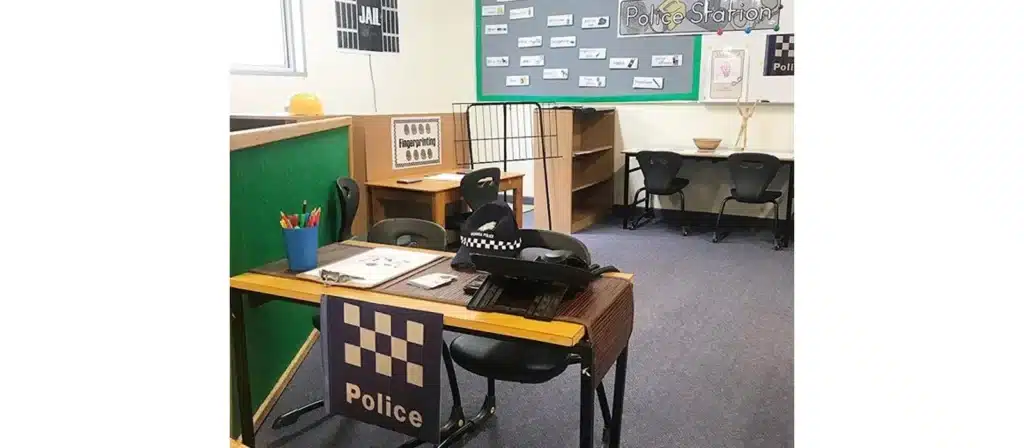
- Materials Needed: Police uniforms, toy handcuffs, police badge props, toy phones, crime scene tape, and chalk to create a “crime scene.”
- Setup: Set up a police station with a desk, police gear, and a “wanted” poster. Children can work together to solve mysteries, arrest the “criminal,” or keep the peace.
17. Teacher and School Play
In this role play, children are the teacher and the students. They can set up a classroom, practice writing on a chalkboard, and conduct pretend lessons. This teaches children about the roles in a school environment.
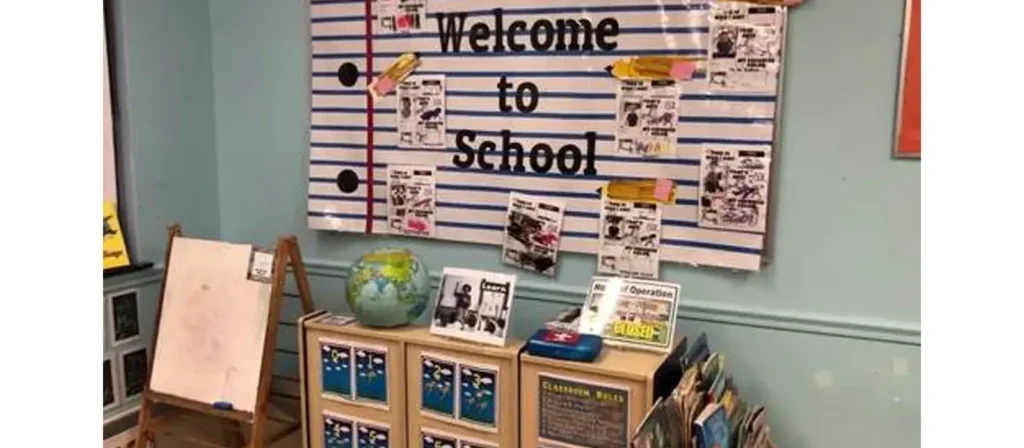
- Materials Needed: Small chalkboards, toy desks, playbooks, markers, classroom signs, and a bell.
- Setup: Set up a “classroom” with desks and a teaching area. Children can sit as “students” while others lead the lesson, asking questions and providing answers.
18. Hotel or Bed and Breakfast
Pretend to run a hotel or B&B where children can be guests or staff members. They can practice making reservations, checking in guests, and offering room service. This helps children develop social skills, understand customer service, and practice problem-solving.
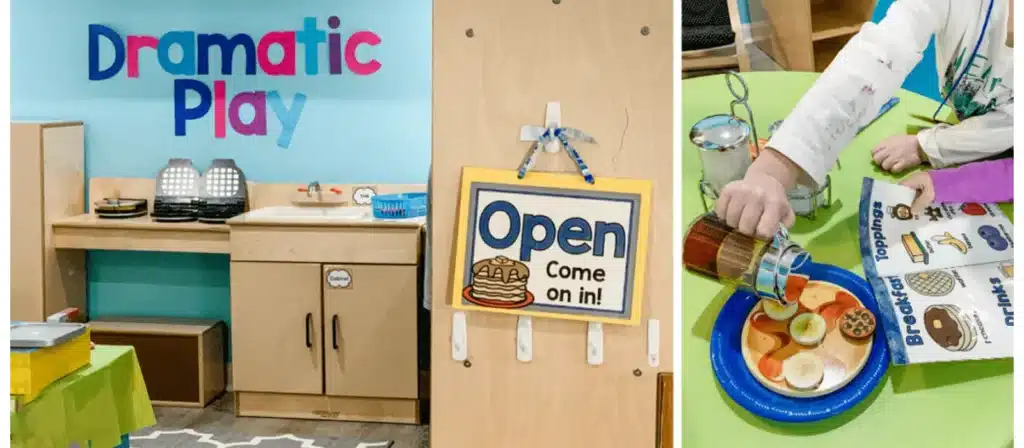
- Materials Needed: Toy hotel keys, check-in books, menu cards, play food for room service, towels, and bed linens.
- Setup: Set up a front desk and “rooms” (which can be beds or mats on the floor). Provide children with role-play cards for guests to check in, book rooms, and interact with hotel staff.
19. Princess and Pirate Party
It is a playful theme where children can pretend to be royalty or pirates. They can embark on adventures, solve mysteries, and create stories, fostering imagination and creativity.

- Materials Needed: Princess crowns, pirate hats, swords, treasure maps, tiaras, jewelry, and themed costumes.
- Setup: Create two areas: one for the princess castle and another for the pirate ship. Set up a “treasure hunt” for pirates and a royal court for princesses.
20. Movie Theater Play
Set up a pretend movie theater where children can take on roles such as ushers, ticket sales, and moviegoers. This allows them to understand different parts of a business and practice social skills.
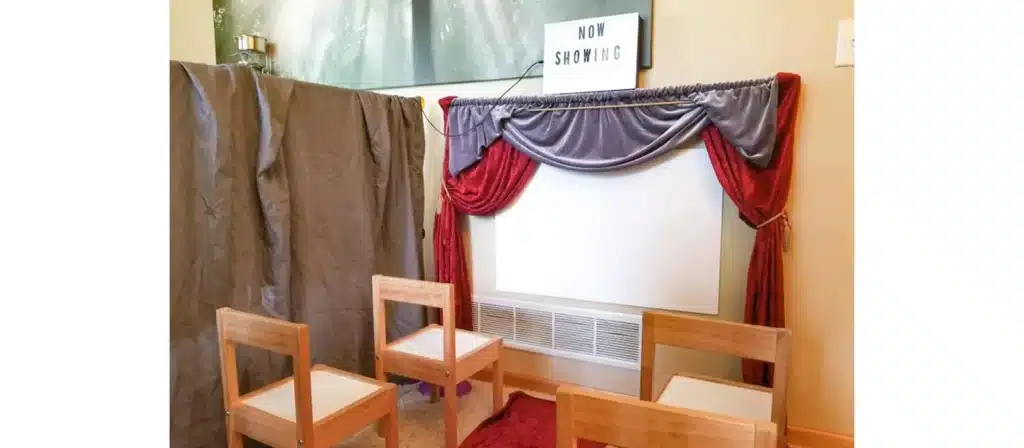
- Materials Needed: Toy tickets, a “movie screen” (a white cloth or poster board), popcorn containers, play money, and seats.
- Setup: Create a movie theater with a screen (could be a blank wall or cloth), a ticket booth, and a popcorn station. Children can sell tickets, serve snacks, and act as patrons watching a film.
21. Detective Agency
Children can role-play as detectives, solving mysteries and finding clues. They can work together to crack the case, which develops their problem-solving skills and attention to detail.
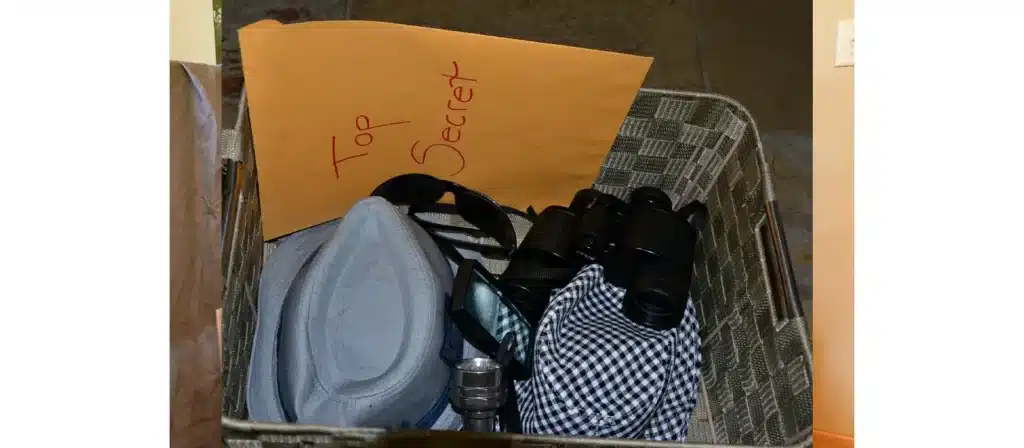
- Materials Needed: Magnifying glasses, notebooks, pencils, detective hats, crime scene props (fingerprint kits, blacklight, etc.).
- Setup: Set up a “crime scene” with hidden clues for children to find. They can gather evidence, observe, and solve puzzles to unlock the mystery.
22. Restaurant Diner
A diner setting where children can pretend to be waitstaff, chefs, or customers. The diner theme introduces the basics of working in a restaurant and allows children to practice important life skills.
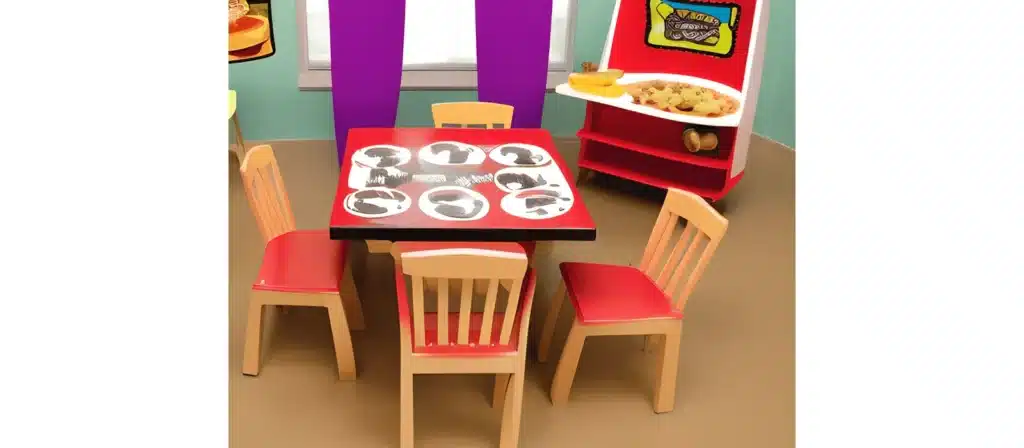
- Materials Needed: Toy food, trays, aprons, menus, play money, kitchen tools (fake), and tables.
- Setup: Arrange a small “diner” area with tables, a menu station, and a kitchen corner. Children can serve each other or practice being customers.
23. Weather Station
Activity Idea: A weather station where children can pretend to be meteorologists, forecasting and reporting the weather to others. This activity can be tied to learning about the seasons, weather patterns, and natural elements. Encourages language development, helps with science exploration (weather), and builds communication skills.
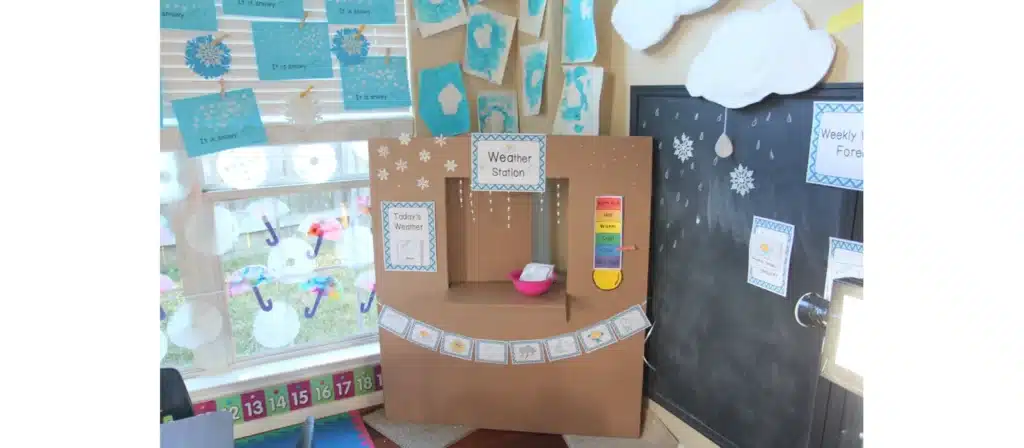
- Materials Needed: Weather charts, thermometers, play microphones, clouds (cotton), and rain gear.
- Setup: Set up a station with weather charts, signs for different weather (sunny, rainy, windy), and a microphone or stand for children to deliver their weather reports.
24. Museum Curators
Let children be curators in a museum, where they can create exhibits, label items, and give tours to others. This role-play helps children explore history, art, and preservation.
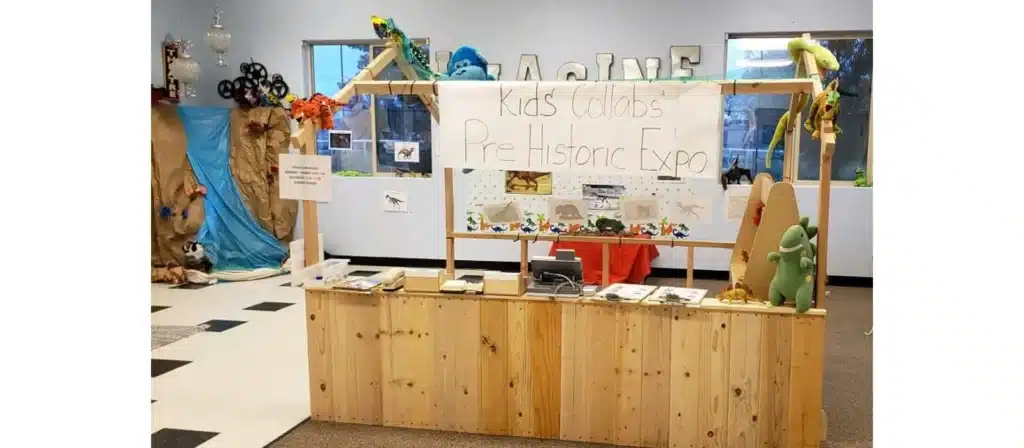
- Materials Needed: Toy artifacts, art supplies (paint, markers), labels, display stands, and “museum” tickets.
- Setup: Set up areas for “exhibits” (can be made from toys, pictures, or craft projects). Children can take turns giving tours, explaining the artifacts, and guiding visitors.
What is the Difference Between Role Play and Dramatic Play?
At first glance, “role play” and “dramatic play” might seem interchangeable, but they refer to different things. Here’s a breakdown of the distinctions:
Role Play
Role play is a subset of dramatic play where children focus on taking on specific characters or roles, often in predefined scenarios. This form of play tends to have more structured elements—such as costumes or props—and it’s about mimicking the actions and language of specific people or characters.
Examples of Role Play:
- Pretending to be a teacher giving a lesson
- Acting as a parent cooking dinner
- Dressing up as a superhero fighting villains
Dramatic Play
Dramatic play encompasses a broader range of activities. While role-play focuses specifically on character assumptions, dramatic play includes any imaginative play scenario, whether symbolic, fantasy, or cooperative play. Dramatic play is more flexible and allows for a wider range of creative expression.
Examples of Dramatic Play:
- Pretending to have a tea party with dolls or stuffed animals
- Creating a pretend zoo with toy animals and a homemade enclosure
- Engaging in fantasy play by pretending to explore outer space
Key Difference: Dramatic play is an umbrella term that includes role-play and other forms of imaginative play, like symbolic or fantasy.
How to Encourage Play in Your Toddler?
Encouraging dramatic play in your toddler doesn’t require any special materials or complex setups—it’s all about fostering an environment where their creativity can flow. Here are some tips to help encourage dramatic play:
- Provide Open-Ended Toys and Materials
Toys that encourage open-ended play are perfect for sparking dramatic play. Blocks, dress-up clothes, dolls, stuffed animals, and pretend kitchen sets allow toddlers to use their imagination differently. - Create Play Spaces
Designate an area of your home as a play zone. This can be a corner of a room or even a whole room where you leave out materials like dolls, toy vehicles, and props for children to use in their dramatic play. - Play Along with Them
Sometimes, the best way to encourage dramatic play is to join in. Take on a role and engage with your toddler in their imaginative scenario. Participating shows them how much fun it can be, whether you’re playing a chef in their restaurant or a patient in their doctor’s office. - Set Up Real-Life Scenarios
Toddlers love to imitate real life! Set up everyday scenarios—such as a mock grocery store or a doctor’s office—and encourage them to play roles within those environments. Add props like toy fruits, vegetables, and doctor’s kits to make it more authentic.
Limited Resources? Try These Simple Dramatic Play Ideas!
You don’t need a fully equipped play corner to inspire imaginative storytelling. Dramatic play can thrive with just a few everyday items. With minimal setup, children can engage in rich pretend play that supports social, emotional, and language development. Here are some low-prep dramatic play ideas to get started:
- old shirts or scarves as costumes
- cardboard boxes as pretend cars or kitchens
- plastic containers as cooking props
- recycled paper and crayons for menus or signs
- tote bags or backpacks for pretend shopping
- empty spice jars for cooking pretend meals
- paper crowns or headbands
- socks as hand puppets
- wooden spoons as magic wands
- pillows and blankets for fort building
Even the simplest items can spark big imagination!
FAQs
- What are some examples of dramatic play for toddlers?
Dramatic play for toddlers could include pretending to cook in a kitchen, acting as a doctor or nurse, or playing with dolls or stuffed animals. - How does dramatic play help child development?
Dramatic play fosters creativity, problem-solving skills, social interaction, and language development by allowing children to express themselves through different roles and scenarios. - What is the best way to encourage dramatic play?
Provide open-ended toys, set up themed play areas, and engage in pretend play with your child. Encouraging imagination and social play is key. - Can dramatic play help with emotional development?
Yes! Dramatic play allows children to explore different emotions and situations in a safe and fun environment, enhancing emotional intelligence. - How often should I encourage dramatic play with my toddler?
Encouraging dramatic play daily or as often as possible is beneficial, as it’s a natural part of a child’s cognitive and social development.
Conclusion
These 24 dramatic play ideas provide a fantastic opportunity to help toddlers and preschoolers develop critical social, emotional, and cognitive skills. From imaginative role play to learning about teamwork and empathy, these activities make learning fun and engaging. By incorporating these ideas into your playtime, you can nurture creativity, foster cooperation, and help children gain essential life skills while they play.

